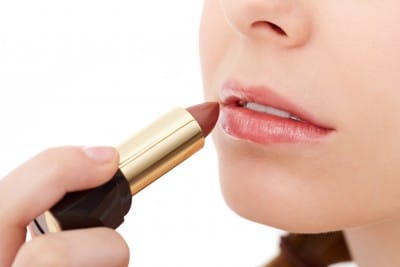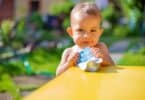Lipstick. Many women across the world won’t leave home without it. It is as common of a staple as sugar or bread. But there is something that you may not know about your favorite cosmetic…it probably contains lead.
But lead isn’t an intentional product in cosmetics. A statement made back in 2007 by the Personal Care Products Council, a trade group that represents some of the largest cosmetics manufacturers in the world clarifies how lead actually gets inside of lipstick:
“Lead is never used as an intentionally added ingredient in or as an additive to lipstick. However, because lead is found naturally in air, water, and soil, it may also be found at extremely low levels as a trace contaminant in the raw ingredients used in formulating cosmetics, just as it is in many thousands of other products,”
Lead is found in many products sold to consumers, including drinking water. But for most products, there are limits set. In the case of water, for example, the maximum lead content considered “acceptable” is 15 parts per billion. Not the case for cosmetics like lipstick.
While the lead levels for lipstick are much lower than the acceptable 15 parts per billion for drinking water, the levels have more than doubled over the last three years; a fact that many consumers are certain to be alarmed by.
What’s even more troubling is that there aren’t any warnings listed on lipstick or any other cosmetic for that matter. In the case of pregnant women and mothers who have children (which everyone knows will try Mommy’s lipstick at least once), the lack of warning could cause some serious damage for young children. According to the U.S. Centers for Disease Control and Prevention, there are no safe lead levels for children or pregnant women.
“Lead is a proven neurotoxin that can cause learning, language and behavioral problems, such as lowered IQ, reduced school performance and increased aggression,” stated Sean Palfrey, M.D., a professor of pediatrics and public health at Boston University and the medical director of Boston’s Lead Poisoning Prevention Program.
Still, cosmetic manufacturers say that the lead exposure with lipstick is less dangerous than with other products, like water, because lipstick isn’t ingested.
Well, I don’t know of any child that hasn’t eaten Mommy’s lipstick at one time or another, but I suppose that’s beside the point because Mark Mitchell, M.D. MPH, policy advisor of the Connecticut Coalition for Environmental Justice and co-chair of the Environmental Health Task Force for the National Medical Association says that lack of ingestion doesn’t make the lead exposure any less dangerous.
“[Lead] builds up in the body over time and lead-containing lipstick applied several times a day, every day, can add up to significant exposure levels,” Mitchell said.
Oh, and just in case you’re wondering which brands had the highest and lowest lead levels….
Maybelline and L’Oreal are both above the California standards for lead content in cosmetics, measuring at 7.19ppm and 7.0ppm, respectively. Covergirl measured at 4.92ppm and Nars measured at 4.93. What was most interesting is that the Wet & Wild Mega Mixers Lip Balm had the lowest lead content, despite the fact that it is also the cheapest lipstick tested. This led the Campaign for Safe Cosmetics to the conclusion that “price is not an indicator of good manufacturing practices.”
Related Articles:
- Male Fertility Test to Hit Drugstore Shelves in April
- Intimate Moment of Cancer-Fighting Mother and Daughter Goes Viral
- Sleep Deprived Parents May Suffer from Weight Gain, Depression and Loss in Intimacy







